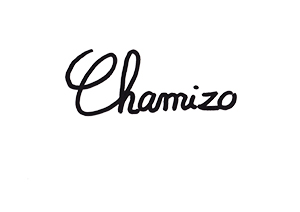



Chamizo est habité par l’univers du Rock et de la Mode ! À la manière d’un Johnny Depp ou d’un Keith Richards, il est témoin de notre monde comme un reporter narquois qui regarde l’actualité et transcrit les people avec justesse et justice. Il y met de la sévérité et de la gouaille grâce à son art du détournement et du symbole. C’est un ami loyal et fidèle.
Alain-Dominique PERRIN
Président de la Fondation Cartier pour l’art contemporain
Chamizo is inhabited by Rock and Design ! In the Johnny Depp or Keith Richards’style, he’s a witness of our world, as a mocking reporter watching current events, and painting people with accuracy and justice. He introduces severity and cheeky humour thanks to his art of diversion and symbol. He is a loyal and faIthful friend.
Alain-Dominique Perrin
CEO Fondation Cartier pour l’art contemporain
Chamizo esta habitado por el universo del Rock y de la Moda ! A la manera de un Johnny Depp o de un Keith Richards, es un testigo de nuestro mundo como un sarcastico reporter que mira la actualidad y transcribe los people con exactitud y justicia. Usa gravidad y palabreria gracias a su arte de diversion y simbolismo. El es un amigo leal y fiel.
Alain-Dominique PERRIN
Director ejecutivo de la Fondation Cartier pour l’art contemporain
Le parcours de Didier Chamizo, né à Cahors (Lot) en 1951, considéré comme l’un des précurseurs du street art, illustre l’importance de l’accès à la culture pendant un temps de détention.
Incarcéré pendant 17 ans au total, dans les années 1970 et 1980, pour sa participation à des braquages de banque et à un trafic d’armes, celui qui était déjà un artiste exposé, après avoir suivi les cours du soir de l’école des Beaux-Arts de Saint-Etienne, n’a pas cessé de peindre derrière les barreaux.
Ces œuvres réalisées en prison ont rencontré un vrai succès, du public comme d’artistes reconnus, au nombre desquels Gérard Garouste, Alain-Dominique Perrin, Président de la Fondation Cartier pour l’art contemporain. Durant son incarcération, Didier Chamizo se mobilise pour partager sa passion : il est rédacteur en chef d’un magazine réalisé en prison, crée un atelier de peinture, réalise une peinture murale d’environ 30 mètres et fait participer des détenus…
Libéré en 1991 mais en partie interdit de territoire, il est finalement gracié par François Mitterrand.
Depuis, tout en poursuivant une carrière internationale, exposant aussi aux côtés de Matta, Combas, César, Arman, Nikki de Saint-Phalle, Tinguely, Jeff Koons…, et ponctuée d’expositions dans différentes villes françaises dont sa ville natale, il mène des actions humanitaires et pédagogiques (Sida, Droits de l’homme, en Afrique et en Indonésie…).
Ainsi, intervient-il lors de conférences sur le milieu carcéral, notamment des débats organisés par le ministère de la Justice, ou encore directement en prison, auprès de détenus.
Il crée aussi atelier de peinture, fait participer des détenus à sa fresque murale…
Didier Chamizo, borned in 1951 in Cahors. He started to work at the age of 13 as a worker but was already attracted by painting.
In 1968, he had his first exhibition in the Maison de la culture in Saint-Étienne.
The foundations of his art, – that will evolve a lot in the future -, were summarized by the art critic Demosthenes Davvetas: “In these very first works appear the essential characteristics of his language: the love of color, the quality and the precision of the drawing, the imperious need to express what is close to his heart in an intense and generous way which embraces the dream,(…)finally the critical attitude towards the society and human existence. «
Attracted by the proletarian revolt movement, Chamizo starts the fight against society and gets involved in all the libertarian fights in the late 60’s.
At this time, he destroyed all his artistic production that he personally considers as the emanation of a bourgeois life. He supports small armed groups in Europe. As a result, he was arrested and sent to jail for 6 years.
Free in 1978, his return to society lasted until the early eighties when a second indictment put him behind bars yet once again. At this time, Chamizo developed a new concept. He painted floors with abstract letter motifs based on the third article of the Declaration of the Rights of Man, reproduced in all languages. The gimmick was to make the public walk all over the rights of man to go and see his paintings.
In summer 92, he produced a monumental painting of eight hundred square meters on a concrete wall located on the banks of the Lot River in Douelle. Commissioned by the Ministry of Culture and the Cartier Foundation for Contemporary Art, this painting explains eight thousand years of wine history.
Released on November 11, 1991, Chamizo was pardoned by François Mitterrand in January 1993.
Since 1991, he has lived in Paris and projects and exhibitions have kept coming…